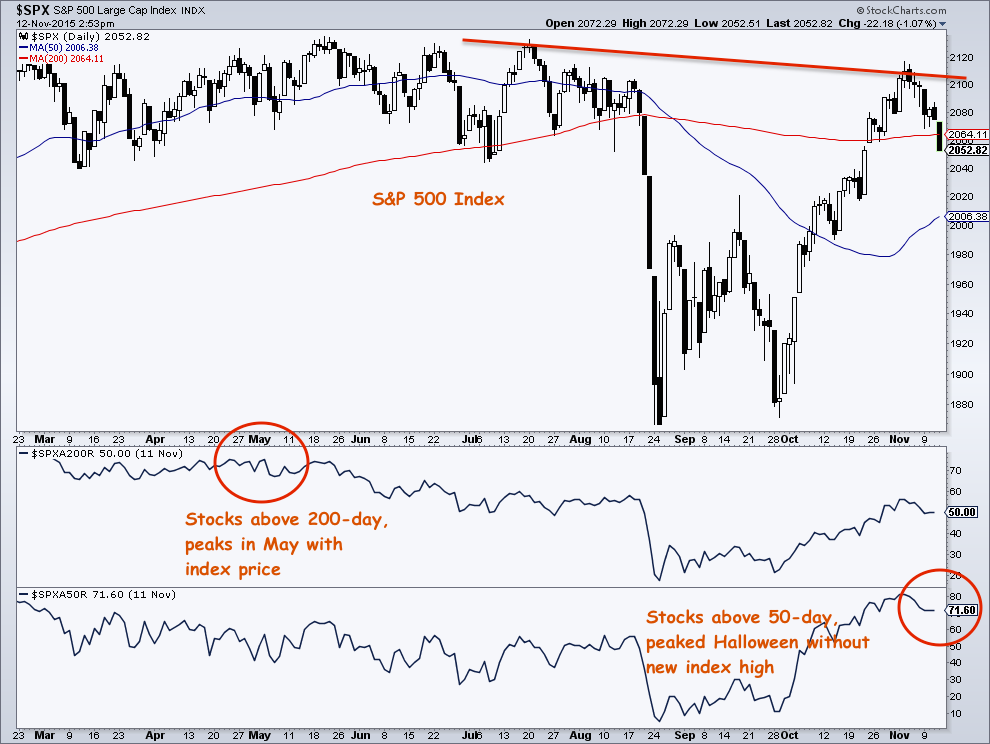Bad Breadth
Courtesy of Joshua Brown, The Reformed Broker
Here’s the thing – breadth is sometimes important and sometimes not.
You can have a negative divergence, where the S&P 500 rallies toward a new high but the amount of stocks rallying with it lags or “does not confirm”. And then you can watch as the divergence resolves to the upside and all the people pointing to it (from the sideline) don’t know what hit them as the price index (the only one that pays) breaks out and away.
There are lots of ways to measure breadth. Some popular ones are:
- new highs vs new lows
- daily or cumulative advance/decline lines
- percentage of stocks above a given moving average
We’ll focus on that last one today.
In my chart, you’ll see S&P 500 price in the top pane, with measures of breadth in the two panes below:
If you were only looking at the percentage of stocks above their 50-day moving average during the recent October rally, the bulls would appear to have quite a bit to hang their hats on. This number hit a high above 80% during the final week of October and start of November.
If you had been looking at the percentage of stocks above their 200-day moving average, however, you’d be looking at a very different picture. With the S&P 500 within 1% of new highs this month, only 50% of its constituent components were above this longer-term trendline. Technicians would look at this metric and note anon-confirmation.
The good news is that the percentage of S&P 500 stocks above the 200-day has improved from the market lows in August and September. The bad news is its nowhere near where it was during the May peak in price, even though we’re almost there again.
In the short-term, breadth during the recent rally has been outstanding, with lots of stocks participating in the run up. On a longer-term time frame, however, it’s looking more like a bounce than a new leg for the bull market.
Of course, I’m over-generalizing here and there are other considerations. For example, the biggest stocks within the S&P 500 are probably more important to watch given their larger weightings. Breadth doesn’t necessarily trump leadership in the order of “what matters” the most.
* * *
Joshua's Interview with Bill Singer
You may have noticed, I post a lot of articles by Joshua Brown. Joshua's blog, The Reformed Broker, is a continual source of entertaining writing and excellent market commentary.
In this interview, From Stockbroker to Media Star (WealthManagement), Joshua talks about who he is and what he does.

From Joshua:
Securities attorney Bill Singer (of the Broke and Broker blog) is an old friend of mine and when he asked to tape an interview for his new show, Case In Point, I was thrilled to participate.
WealthManagement.com has the video live on their site this morning:
Bill Singer speaks to the Reformed Broker, Josh Brown, on his history in the financial services industry; his disillusionment with the brokerage model and with Wall Street; why young advisors should not follow his example; his new focus as a registered investment advisor with partner Barry Ritholtz; and how he rose to popularity as a writer and blogger (hint: “I’ve been known to send a tweet or two.”)




